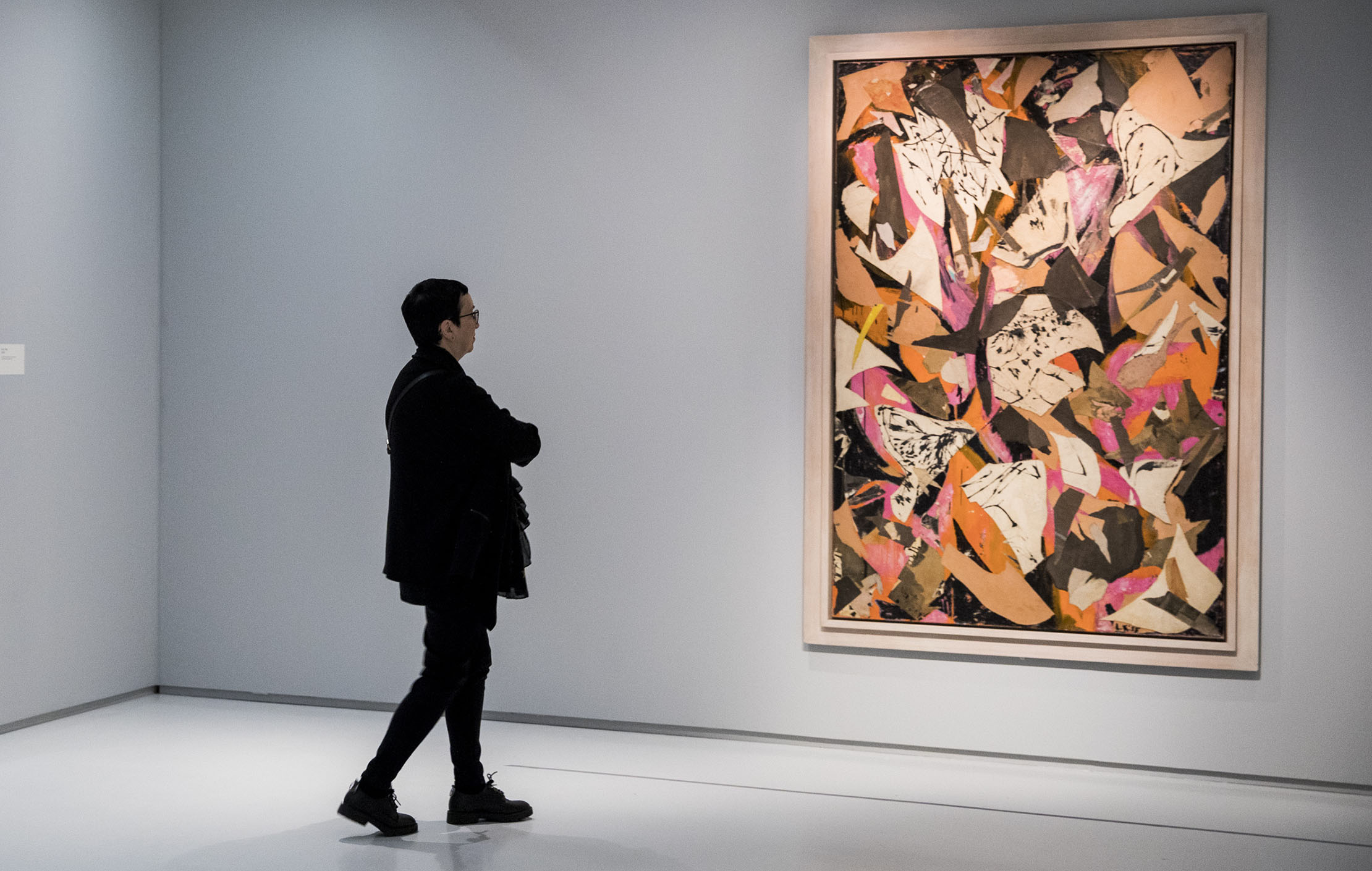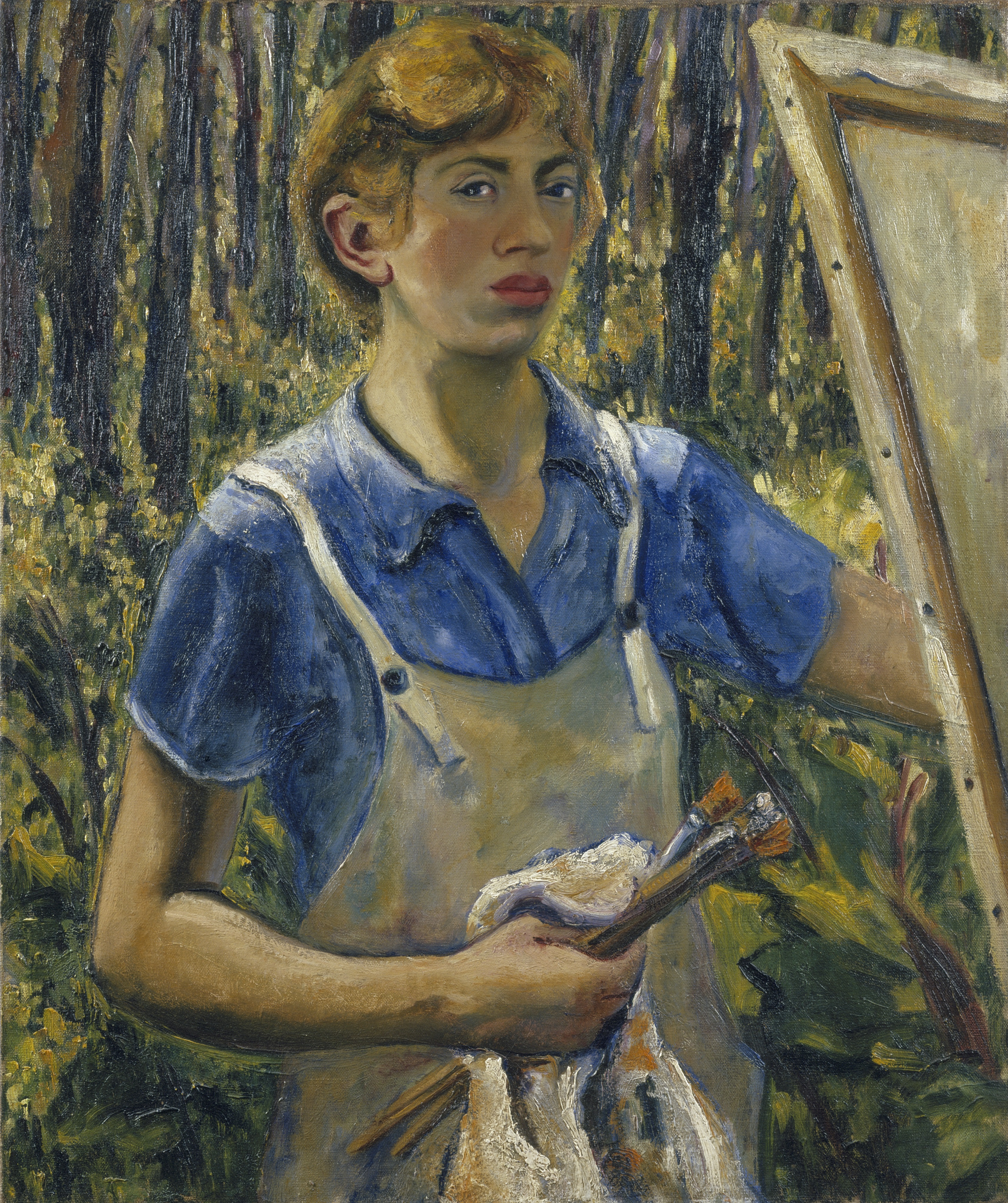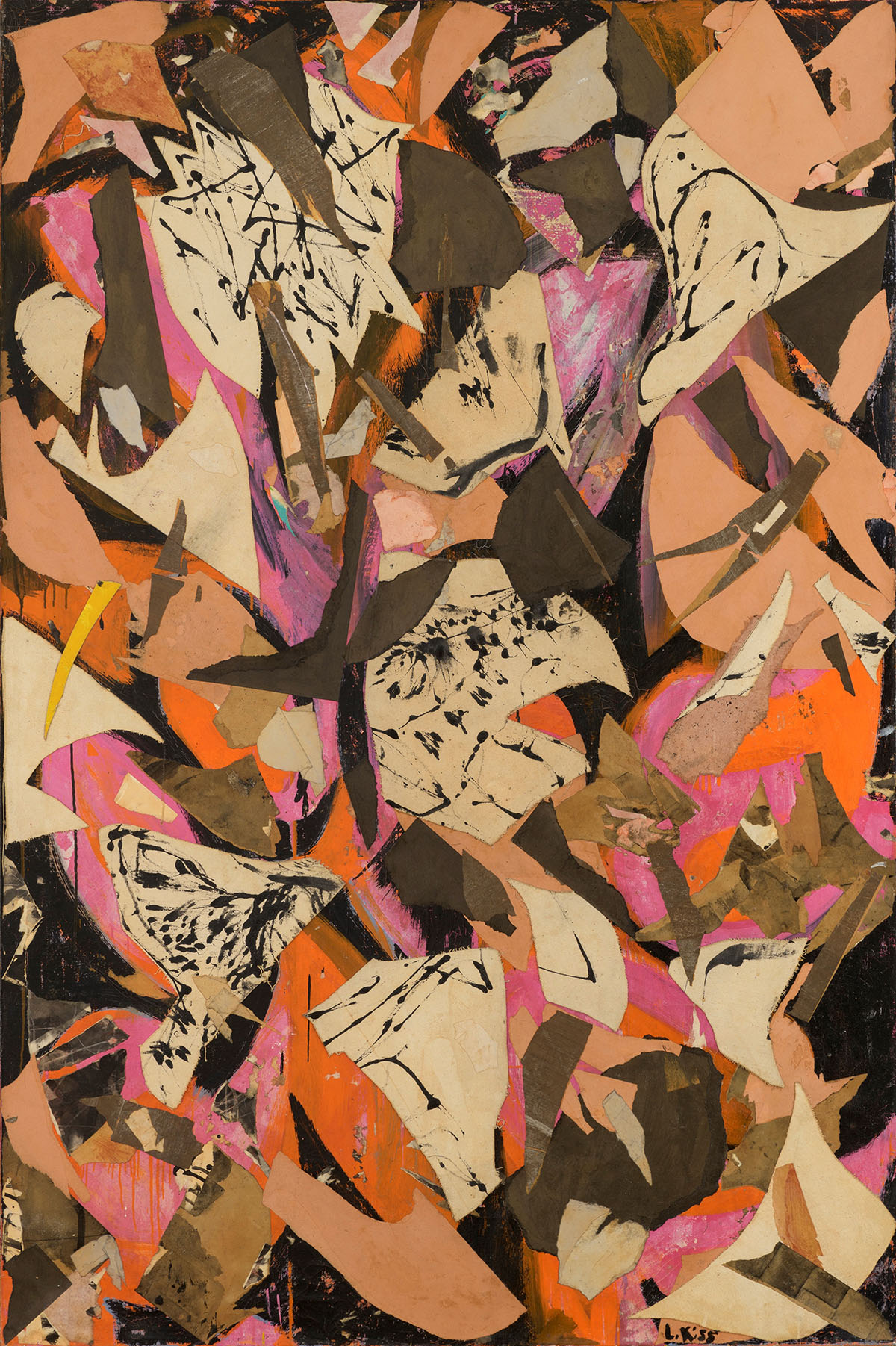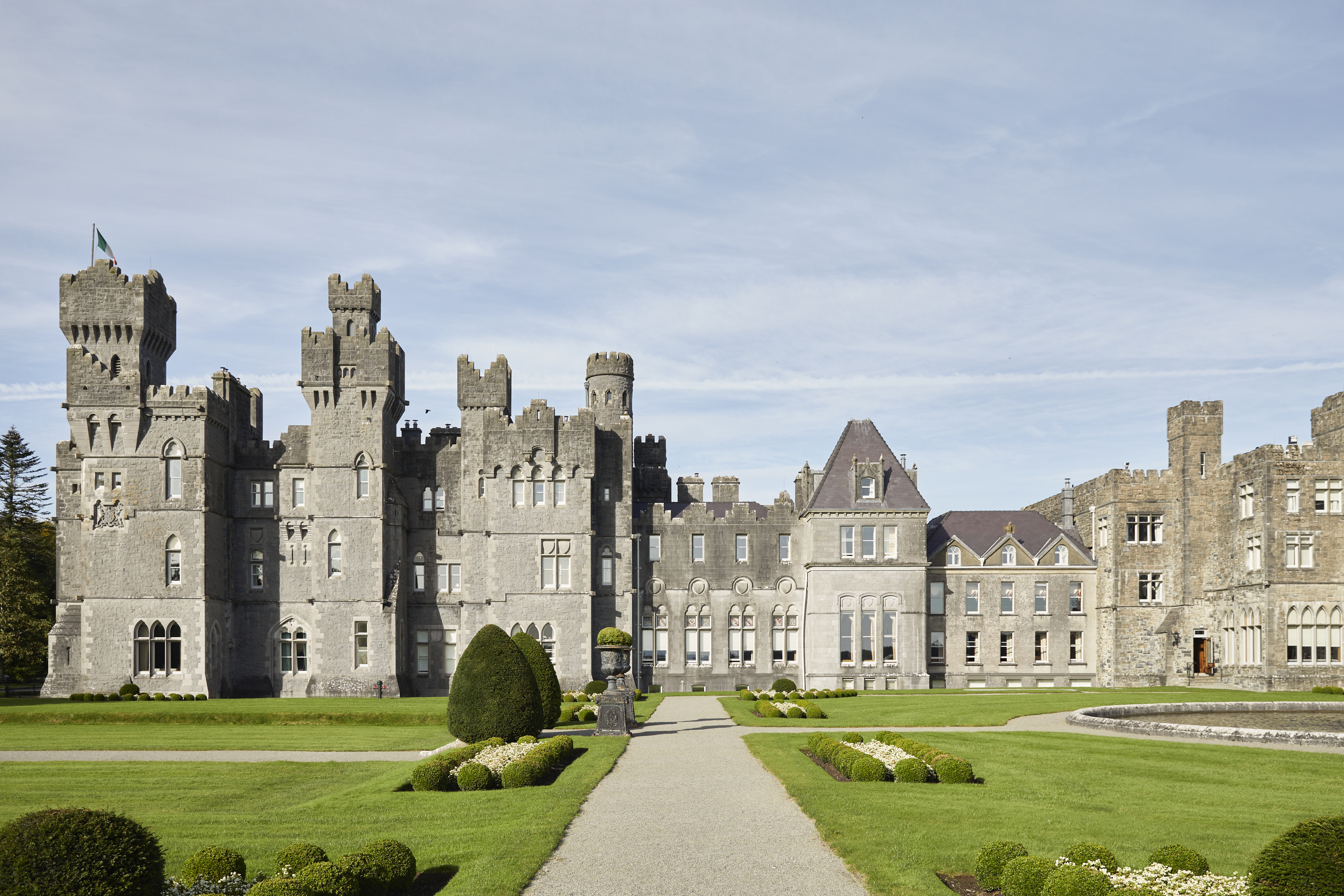In Focus: The Bald Eagle, America's symbol, 'torn apart, deranged and fragmented' by Lee Krasner
Lee Krasner's bold work is the subject of an exhibition at The Barbican. Lilias Wigan paid a visit, and focuses in one one of the artist's extraordinary collages.

‘Painting is not separate from life. It is one. It is like asking – do I want to live? My answer is yes – and I paint.’
Such was the resolute attitude of Brooklyn-born artist Lee Krasner (Formerly Lena Krasner, 1908-1984), a pioneer of Abstract Expressionism – the art movement that grounded New York as the centre for post-war American art. Determined to be an artist, at 14-years-old she applied to Washington Irvine High – the only school in the city with an art course open to girls.
It was an unconventional decision for a female Orthodox Jewish Russian émigré. Her ‘Strong inner rhythm’ (Piet Mondrian) didn’t go unnoticed. She was included in the 1942 exhibition French and American Painting at the McMillen Gallery, New York, alongside the likes of Willem de Kooning and her future husband, Jackson Pollock (1912-1956). Never having met her fellow exhibitor, she paid Pollock a visit at his studio; they fell for one another and married in 1945.

Cyclical in her working nature, Krasner consistently developed new styles in her art. Her trajectory is made clear in the current Lee Krasner: Living Colour exhibition at The Barbican, London, which runs until September. Chronologically arranged, the show traces Krasner’s experimentation with new techniques as she found vitality by seeking new means of expression. From rare self-portraits done as a student (the bulk of which were destroyed in a fire at her parents’ home), to the ‘gray slabs’ she painted after her father’s death in 1944, and compact ‘Little Images’ – abstractions made with thick paint using a palette knife and stiff brushes – her work changed dramatically.
Indeed, they prove her point that ‘you can have a tiny painting which is monumental in scale.’ Krasner wasn’t afraid to incorporate found or discarded materials into her dense paintwork. Using wagon wheels from her and Pollock’s farm in The Springs, near East Hampton, she made mosaics using scraps of tesserae and broken glass – one of which is exhibited.
In 1953, after she had converted a disused smokehouse on their new plot of land at The Springs into a new studio, she began to focus on collage – a technique that echoes her earlier interest in mosaics. A likely source of inspiration were Matisse’s vibrant cut-outs, which had been included in his retrospective at the Museum of Modern Art in New York in 1951, although Krasner’s collages are more organic in style, with torn edges often visible. As well as re-using elements from her own previous work, she integrated fragments of Pollock’s abandoned, but instantly recognisable, drawings, such as in Bald Eagle (1955), Forest No. 2 (1954) and Color Totem (1955).

In Bald Eagle, the bird of prey is torn apart, deranged and fragmented. Krasner has re-assembled it into a new form. The parts of the eagle are spread diagonally across the canvas amid an explosion of layered, coloured paper. The scrabble of colours and body parts overwhelms, heightened by the centralised focal point – an alarming, gaping mouth and menacing sharp beak.
Krasner found herself widowed at the age of 47 when Pollock died in a car accident in 1956. The post-Pollock era saw yet another leap in productivity. She moved into her late husband’s much larger studio, where she could pin vast canvases onto the expansive walls. The span of her new quarters enabled her to develop uninhibited, gestural strokes of colour. Many of the works of this period in the exhibition have been lent from private collections.
Exquisite houses, the beauty of Nature, and how to get the most from your life, straight to your inbox.
Even in the most tumultuous of times, Krasner remained prolific and made a significant contribution to Abstract Expressionism. Surprisingly, this is the first European solo exhibition of her work since 1965.
'Lee Krasner: Living Colour' is at The Barbican, London until 1 September, 2019. Tickets are available here.
-
 Ashford Castle review: The fantastic five-star hotel in Ireland that the Guinness family once used to show off their wealth and influence
Ashford Castle review: The fantastic five-star hotel in Ireland that the Guinness family once used to show off their wealth and influenceYou’ve seen ‘The House of Guinness’ — well here’s the castle.
-
 The David Beckham edition of the Country Life Quiz of the Day, October 22, 2025
The David Beckham edition of the Country Life Quiz of the Day, October 22, 2025Icon of the football pitch, underwear adverts and the countryside — we celebrate our guest editor Sir David Beckham in today's quiz.